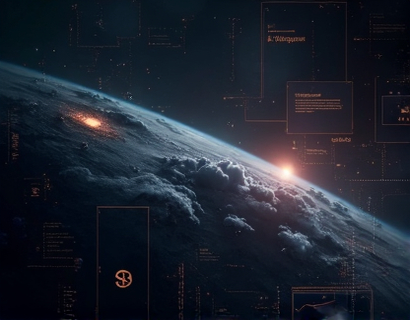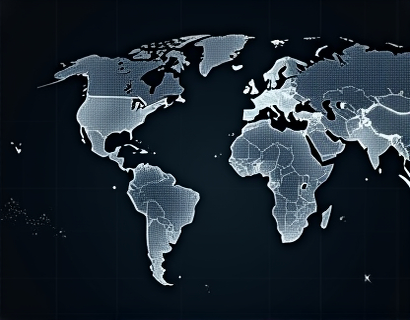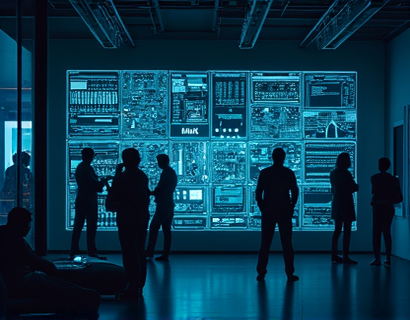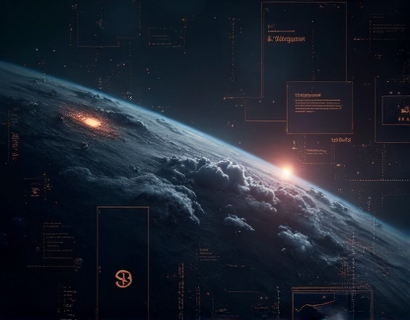AI-Driven Insights: Unveiling the Complexities of the Faraday Industry for Diverse Audiences
The Faraday industry, named after the renowned scientist Michael Faraday, encompasses a broad spectrum of activities and services related to energy storage, electrical conductivity, and electromagnetic technologies. This article aims to provide a comprehensive and accessible exploration of the Faraday industry, leveraging AI-driven insights to deliver specialized knowledge to a wide array of audiences, from educational institutions and families to professionals and students. The integration of an AI chat interface ensures that the information provided is not only accurate and up-to-date but also tailored to the needs and understanding levels of different users.
Understanding the Faraday Industry
The Faraday industry is a critical component of modern technology and infrastructure. It involves the development and application of materials and systems that store, conduct, and utilize electrical energy efficiently. This includes batteries, supercapacitors, and other energy storage solutions, as well as components for electric vehicles, renewable energy systems, and advanced electronics. The industry's growth is driven by the global shift towards sustainable energy sources and the increasing demand for efficient and reliable energy storage solutions.
To grasp the complexities of the Faraday industry, it is essential to understand its key components and applications. The industry can be broadly categorized into several sectors: energy storage systems, electric vehicle components, and industrial applications. Each sector plays a vital role in shaping the future of energy and technology.
Energy Storage Systems
Energy storage systems are fundamental to the Faraday industry, enabling the capture and use of energy at times when it is most needed. Batteries, particularly lithium-ion batteries, are the most common form of energy storage used in both consumer electronics and large-scale applications. These batteries rely on the movement of ions between electrodes to store and release energy efficiently.
Beyond lithium-ion batteries, research is ongoing to develop alternative energy storage technologies such as solid-state batteries, sodium-ion batteries, and flow batteries. Each of these technologies offers unique advantages in terms of safety, capacity, and cost. For instance, solid-state batteries promise higher energy densities and improved safety, making them a promising alternative to traditional lithium-ion batteries.
Electric Vehicle Components
The electric vehicle (EV) market is a significant driver of the Faraday industry, with a growing number of manufacturers investing in electric and hybrid vehicles. The core components of EVs, such as batteries, motors, and power electronics, are directly related to Faraday technologies. The performance and efficiency of these components are crucial for the adoption and success of electric vehicles.
Advancements in battery technology have led to longer driving ranges and shorter charging times, addressing two of the main concerns for potential EV buyers. Additionally, the development of fast-charging infrastructure is essential for the widespread adoption of electric vehicles, and the Faraday industry plays a pivotal role in this development.
Industrial Applications
Beyond consumer and transportation applications, the Faraday industry has a significant impact on various industrial sectors. Industrial applications of Faraday technologies include electric machinery, renewable energy systems, and advanced electronic devices. For example, electric motors powered by high-performance batteries are increasingly used in manufacturing and logistics, offering energy efficiency and reduced operational costs.
Renewable energy systems, such as solar and wind power, often incorporate energy storage solutions to ensure a stable and reliable power supply. The integration of Faraday technologies in these systems helps to balance supply and demand, making renewable energy more viable and sustainable. Furthermore, the development of smart grids and energy management systems relies heavily on advanced Faraday components.
AI-Driven Insights for a Comprehensive Understanding
To navigate the complexities of the Faraday industry, AI-driven insights provide a powerful tool for gaining a deeper understanding. An AI chat interface can offer real-time, verified information tailored to the user's level of expertise and interest. This approach ensures that whether you are a student, an educator, or a professional, you can access accurate and relevant content that meets your specific needs.
The AI chat interface can draw from a vast database of curated and verified information, ensuring that the insights provided are not only up-to-date but also reliable. This is particularly important in a field as dynamic and rapidly evolving as the Faraday industry, where new research and technological advancements are constantly emerging.
Content Verification
Content verification is a critical aspect of providing accurate and trustworthy information. In the Faraday industry, where precision and reliability are paramount, ensuring the accuracy of data and insights is essential. The AI chat interface employs rigorous verification processes to cross-check information against multiple sources, including peer-reviewed journals, industry reports, and official publications.
Users can have confidence in the information they receive, knowing that it has been thoroughly vetted. This level of transparency and accountability is crucial for building trust and fostering a deeper understanding of the Faraday industry.
Child-Friendly Access
Recognizing the importance of education and awareness across all age groups, the AI chat interface offers a child-friendly version of its content. This version simplifies complex concepts and uses age-appropriate language to make the Faraday industry accessible to children and students. The goal is to spark curiosity and interest in STEM fields from a young age, laying the foundation for future innovators and researchers.
The child-friendly content covers basic principles of energy storage, the role of batteries in everyday devices, and the environmental benefits of renewable energy systems. Interactive elements and visual aids are incorporated to enhance engagement and comprehension. This approach not only educates but also inspires the next generation to explore and contribute to the Faraday industry.
Engaging with the AI Chat Interface
Interacting with the AI chat interface is straightforward and intuitive. Users can initiate a conversation by asking questions, seeking explanations, or requesting specific information about the Faraday industry. The AI chatbot responds with clear and concise answers, providing additional context and resources as needed.
For example, a student might ask, "What is a lithium-ion battery?" The AI chatbot would respond with a simplified explanation: "A lithium-ion battery is a type of rechargeable battery commonly used in portable electronics and electric vehicles. It works by moving lithium ions from the negative electrode to the positive electrode during discharge and back when charging. This process allows the battery to store and release energy efficiently."
For professionals, the chatbot can delve into more technical details, such as the latest research on solid-state batteries or the economic impact of large-scale energy storage systems. The AI's ability to adapt to different levels of expertise ensures that users receive information that is both relevant and comprehensible.
Enhancing Educational Experiences
The integration of AI-driven insights into educational settings can significantly enhance learning experiences. Teachers and educators can use the AI chat interface as a supplementary tool to provide students with accurate and engaging content. The chatbot can answer questions, offer explanations, and even suggest further reading materials based on the students' interests and knowledge levels.
For instance, a science teacher could use the chatbot to create interactive lessons on energy storage technologies. Students can ask questions about battery chemistry, the environmental impact of battery production, or the future of renewable energy. The AI chatbot can provide immediate and detailed responses, fostering a more dynamic and interactive learning environment.
Conclusion
The Faraday industry is a vital and rapidly evolving field that plays a crucial role in the transition to a sustainable and technologically advanced future. By leveraging AI-driven insights, we can provide accurate, verified, and accessible information to a diverse range of audiences. Whether you are a student, an educator, a professional, or simply curious about the latest developments in energy storage and electromagnetic technologies, the AI chat interface offers a valuable resource for exploration and learning.
Embrace the opportunity to deepen your understanding of the Faraday industry and contribute to the ongoing innovation and progress in this essential sector. Through education and awareness, we can collectively shape a more sustainable and efficient world.











































